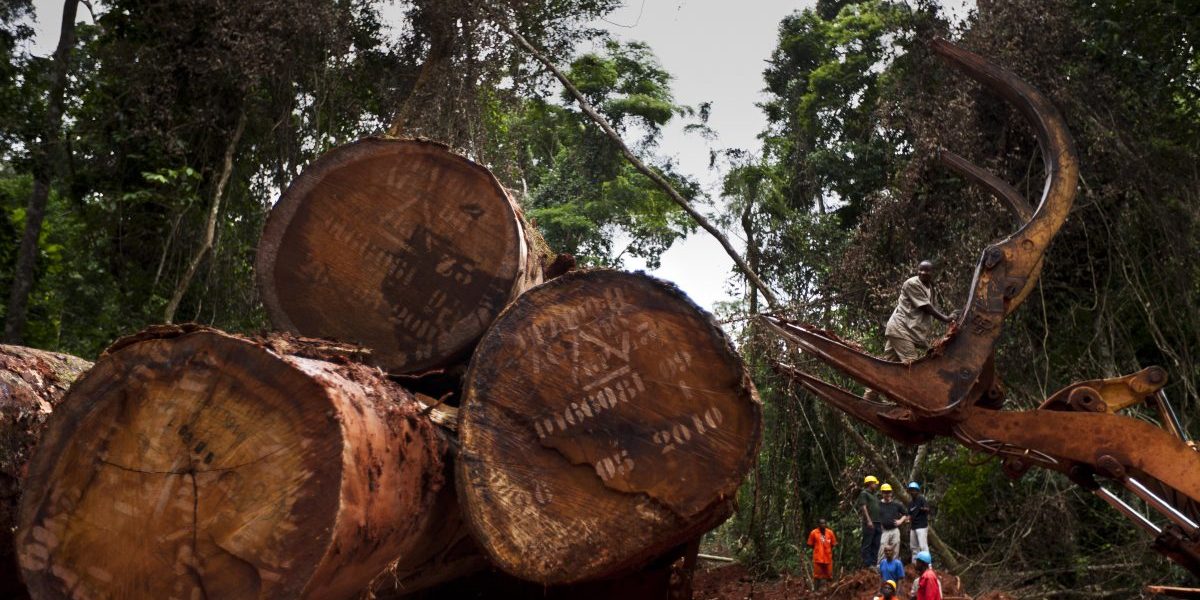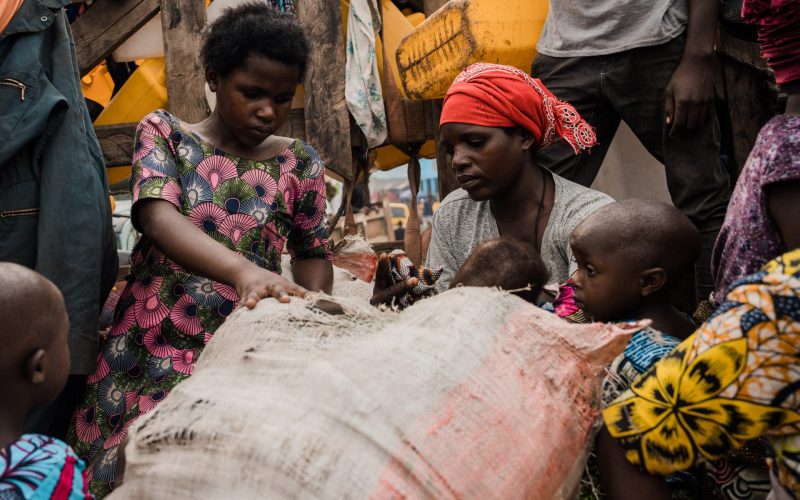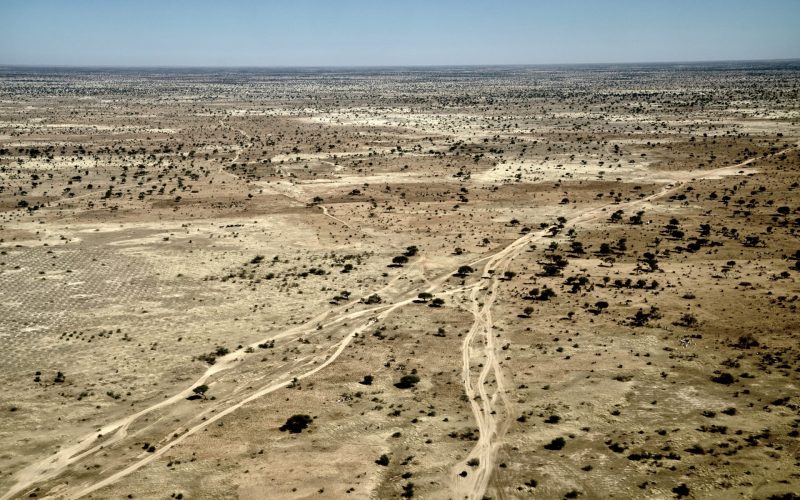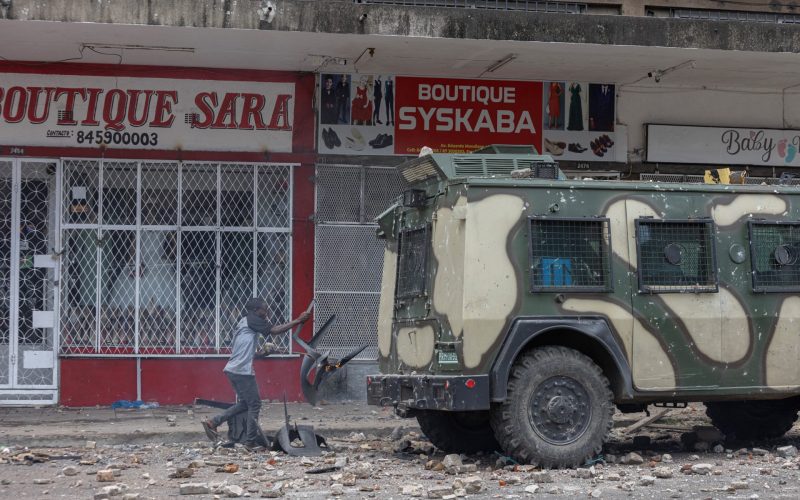Recommendations
- The EU should base the design and evaluation of resource sector reforms on a human security approach as developed by the UN.
- EU interventions in natural resource governance should strive to directly serve the human security of those most affected by natural resource extraction and of society as a whole. The success of reform interventions should be evaluated against this goal.
- Policymakers must make better use of existing knowledge on the socio-political and socio-economic context in which reforms will be implemented. This includes historically developed social, political and economic structures at the national level and their outward relations.
- The EU should seek to streamline interlinkages between its consumer market regulations, its support for international trade regimes, and its collective and members’ bilateral development cooperation – all of which should be informed by the human security concept.
Executive summary
In response to resource-fuelled conflicts in producer countries, EU foreign policy initiatives have sought to enhance ‘good governance’ throughout the value chain for an increasing number of primary commodities. EU-supported reforms of natural resource sectors are centrally informed by the concept of formalisation. Using the cases of diamond sector reform in Sierra Leone and timber sector reform in Liberia, this briefing aims to highlight the shortcomings inherent in formalisation-oriented approaches. We suggest that the notion of human security is better suited to guide EU intervention in natural resource sectors and their evaluation. Formalisation approaches tend to favour activities – and red tape – that have yet to be linked to lasting benefits for producer societies. In contrast, a human security approach promotes policies that focus on tangible results at the local level of society, especially for those most affected by natural resource extraction.
Introduction
EU interventions in the natural resource sectors of producer countries strive to serve a twofold purpose: to minimise violence and human insecurity fuelled by natural resource extraction, and to promote a beneficial investment climate for European companies.[1] Thus, a growing number of EU-supported development cooperation and peacebuilding initiatives in Africa seek to promote ‘good governance’ of natural resource value chains. Some measures amount to direct reform interventions in sourcing countries. Supplemental policies aim to disadvantage commodities produced by non-compliant businesses or obstructive regimes. Across all stages of the commodity chain, one strategy dominates the toolbox of EU peace builders, development practitioners and legislators: formalisation. This briefing discusses its drawbacks and proposes a more promising alternative informed by the notion of human security.
Formalisation or human security?
Formalisation as a guiding principle of natural resource governance is based on the idea that increased legalisation and transparency can remedy the negative externalities associated with natural resource abundance. The formalisation lens has grown increasingly popular over the last two decades and centrally informs the EU’s approach to resource sector governance in sub-Saharan Africa. Major governance reforms of natural resource markets that are based in a formalisation approach include the Kimberley Process Certification Scheme (KPCS), the Extractive Industries Transparency Initiative (EITI), section 1502 of the Dodd-Frank Wall Street Reform and Consumer Protection Act, the Forest Law Enforcement, Governance and Trade Action Plan and its Voluntary Partnership Agreements, the EU Timber Regulation and Conflict Minerals Regulation, and the ITRI Tin Supply Chain Initiative.
Resource sector formalisation is assumed to promote government output and legitimacy while increasing public revenue and market efficiency. It is also viewed as an instrument to bar organised crime and rebel forces from monetising the violent capture of national resources. Formalisation has thus become the answer to good natural resource governance. Critics have drawn attention to the inherently technocratic nature of associated efforts, and have warned that transparency measures can easily be used as an ineffectual institutional ‘refurbishment’[2] beneath which exclusive and predatory practices remain unaltered. In the past, these have often favoured large international businesses over local economies by design. Formalisation may entrench that unfair advantage in gaining access to resources. Especially under authoritarian or otherwise dysfunctional governance, transparency does not automatically increase accountability. In sum, formalisation approaches are focused on the activities associated with fulfilling formalisation requirements, not on their de facto impact on human wellbeing in resource-exporting societies.[3]
At the core of the concept of human security lies the idea that the focus must shift from the security of the state to the security of individuals. The concept of human security has since come to inform the strategy development of the UN, and several nations have made the concept integral to their foreign policy. Since 1993 the UN has defined seven ‘people-centred’ and ‘interrelated’ areas of security that stress the individual’s fundamental freedom from want (economic security) and from fear (personal, political, environmental, health, food and communal security). Together these form the basis of collective national and international security.[4] Based on this premise, the UN called for policy design that is based on bottom-up, comprehensive and context-specific analysis of human insecurities. This is thought to constitute a starting point for people-centred, empowering and preventive approaches to human security threats emanating from both local and international policies – or mismatches among them.[5] The human security concept not only relates to national and international security practices but is also applicable to peacebuilding and development cooperation. In the following two case studies, we aim to show that formalisation-oriented resource sector reforms have not causally improved human security in Sierra Leone or Liberia.
Diamond sector reform in Sierra Leone
In Sierra Leone the governance of diamond production and trade has been linked directly to the onset and maintenance of the civil war from 1991–2002.[6] Sierra Leone was one of the first cases in which international peacebuilding interventions focused on re-establishing state authority over the country’s resources. Sparked by the public outcry over international companies’ trading in so-called ‘blood diamonds’ from Sierra Leone, the international community sought to regulate the global trade in uncut diamonds and ensure that diamonds did not fuel violent conflict in producer countries. The first and most prominent initiative to formalise the diamond trade was the KPCS, a public–private partnership between state, industry and civil society representatives. All participating members legally commit to trading only diamonds that carry state-issued KPCS certification.
In addition, participants are obliged to establish a system of internal controls through national legislation, institutions and import/export controls and transparency measures. On the national level of governance institutions, Sierra Leone implemented far-reaching legal and institutional reforms. These were extensively supported by international donors, including the EU and its member states. Reforms included the revision of its mining laws and associated policies, the establishment of a National Minerals Agency tasked with overseeing policy implementation in the sector, the harmonisation of export taxes with its neighbouring countries, the establishment of specialised police units targeting crimes in the precious minerals sector, and the assignment of international diamond valuators to the national Government Gold and Diamond Office in order to curb corruption and the undervaluation of diamonds. A national cadastral system detailing all mineral rights, export licences and related payments was established and made public. Sierra Leone also became a member of the international EITI and was declared EITI-compliant in April 2014.
For many, the Sierra Leonean case reads like an extraordinary success story.[7] Certainly, formalisation has led to soaring official diamond exports. Yet it has not led to the legalisation of in-country illegal diamond production and trade: to this day, diamonds are still produced and traded without the required licences on a significant scale. Most of these ‘illegal’ diamonds are channelled into the legal sector and exported legally, a practice that is condoned by state actors on all levels. [8] In the artisanal sector, reforms such as the Diamond Area Community Development Fund and, more recently, formalisation efforts and fair trade initiatives have not had any significant effects on the human security of artisanal miners or local communities in mining areas.[9] Likewise, industrial mining by international companies has failed to increase human security in mining areas in any significant manner, while yielding only negligible income through taxes and royalties. In 2015 export duties on diamonds amounted to about $2.4 million.[10] In 2016 collected royalties on diamonds and gold combined came to $3.2 million, corresponding to 0.1% of the gross domestic product.[11] The meagre benefits flowing from large-scale mining contradict the long-held assumption by many donor organisations that industrial mining is an effective tool to help post-conflict countries jump-start their economy while being easier to oversee than hundreds of thousands of artisanal miners. In Sierra Leone this has not proven true. In addition, large-scale diamond mining is linked to violent conflict (such as when security officers assigned to an international company turned against community members protesting against resettlement and environmental pollution in 2007 and 2012) and a loss in food security, communal cohesion, health and economic security as a result of resettlement.[12]
Forest sector reform in Liberia
Warlord/president Charles Taylor and a Eurasian network of trade partners exploited Liberian timber to fund a state-disintegrating civil war from 1997–2003.[13] Afterwards, international state building and development aid aimed to recentralise and reformalise Liberia’s forest regime.[14] As a result of international reform support, Liberia soon achieved EITI status for its timber. In 2013 the country signed an ongoing Voluntary Partnership Agreement (VPA) for forest sector legalisation with the EU. The EU today claims that ‘the VPA process has’ already ‘fostered multi-stakeholder participation, transparency, legislative clarity, legal reforms and other aspects of good governance’ in Liberia’s forestry sector.[15]
Yet, the EU’s own VPA implementation reports state the opposite.[16] Liberia’s EITI membership and International Tropical Timber Organization (ITTO) funding were both suspended in 2018 owing to documentation and accounting violations.[17] The World Bank and the ITTO have admitted that Liberia’s internationally conceived, supported and hailed National Forestry Reform Law of 2006 harms the interests of Liberian forest communities and of poor Liberians [18] – ie, three-quarters of the population. Likewise, although the domestic timber economy has always outperformed industrial export production in terms of extracted wood and livelihoods for Liberians, the VPA prioritises the legalisation of Liberia’s industrial timber export sector. However, its top destinations – China and India – have no legality requirements. And as one of China’s main customers, the EU exempts most internationally traded wood fibre items (such as packaging and transport material carrying Chinese-made goods) from legality verification.[19]
As a result, formalisation of the Liberian forest sector has not led to improvements in human security. For up to a decade, forest communities have signed logging contracts without any knowledge of lawful procedure, benefits and local governance requirements – all with the participation of the very same internationally funded and supported Liberian government agency that is legally obliged to appraise and guide forest communities, namely the Forest Development Authority. As a result, most forest communities report conflicts over benefit allocation and territorial boundaries. Often they have not even seen copies of the logging contracts that their Monrovia-based representatives had signed. To control the lawful implementation of these contracts, government auditors use ‘logistical’ support from the logging companies themselves. These operations are allegedly polluting forest water sources, causing food shortages and raising bush-meat prices around logging camps. [20] Bush meat is illegal in Liberia, but since the civil wars have decimated the cattle population, animal husbandry remains unaffordable to most and hunting often provides the only available income. In addition to malnutrition, health insecurity results from government-run clinics that are out of drugs for months on end, while roads and bridges are perilous, making clinics inaccessible to many. [21] The few and far-between schools are often staffed with volunteer teachers who are hardly literate themselves and produce alumni who struggle with basic reading and writing comprehension in English – the language of Liberian law. [22] This alone shows how challenging it is for forest communities to hold their representatives and multinational companies accountable for their actions in the Liberian forest.
Conclusion
Resource sector formalisation often yields impressive institutional and legislative outputs. Yet these frequently do not translate into on-the-ground gains in human wellbeing. In the cases of Sierra Leone and Liberia, these shortcomings can be explained by using an analytical lens of human security. First, the reform interventions were not people-centred and bottom-up – they introduced legal changes at the national level, in the hope that these would have positive trickle-down effects, without specifying how these effects would come about. Second, interventions were not context-specific. As a result of colonial rule, patrimonial and highly factionalised politics and elite capture, both countries are far from the ideal of a formal state bureaucracy. As a result, attempting to address the countries’ post-conflict challenges through legal and institutional measures that called for extensive centralised and countrywide institutional, human and socio-economic capacities was a fraught plan by design. Furthermore, without comprehensive and prevention-oriented analysis little attention was paid to potentially dangerous mismatches between different EU policies. While some EU reform support does emphasise local empowerment, this is rendered meaningless by an intervention design that treats human security as an afterthought.
Footnotes
[1] See, for example Commission of the European Communities, Communication from the Commission to the European Parliament and the Council: The Raw Materials Initiative – Meeting our Critical Needs for Growth and Jobs in Europe, COM (2008) 699 final, https://eur-lex.europa.eu/LexUriServ/LexUriServ.do?uri=COM:2008:0699:FIN:EN:PDF, accessed 10 May 2019; European Commission, Communication from the Commission to the European Parliament, the Council, the European Economic and Social Committee and the Committee of the Regions: Tackling the Challenges in Commodity Markets and on Raw Materials, COM (2011) 25 final, accessed 10 May 2019; European Commission, Joint Communication to the European Parliament and the Council: Responsible Sourcing of Minerals Originating in Conflict-affected and High-risk Areas. Toward an Integrated EU Approach, JOIN/2014/ 8 final, https://eur-lex.europa.eu/legal-content/EN/TXT/?uri=CELEX%3A52014JC0008, accessed 10 May 2019.
[2] Alley R, ‘Regimes that obstruct: A problem of institutional refurbishment following internal conflict’, Intervention and Statebuilding, 9, 1, 2015, p. 119.
[3] For a more detailed critique of formalisation-oriented approaches, see, for example, Engwicht N & J Grabek, ‘A human security perspective on natural resource governance: What makes reforms effective? ’, South African Journal of International Affairs (forthcoming).
[4] See, for example, UNDP (UN Development Programme), Human Development Report 1993. New York: Oxford University Press, 1993; UNDP, Human Development Report 1994. New York: Oxford University Press, 1994.
[5] UNSG (UN Secretary General), Follow-up to General Assembly Resolution 66/290 on Human Security: Report of the Secretary General. New York: UN, 23 December 2013, p. 4; Kaldor M, ‘Human security’, in Kaldor M & I Rangelov (eds), The Handbook of Global Security Policy. Chichester: John Wiley & Sons, 2014.
[6] See, for example, UN, Report of the Panel of Experts Appointed Pursuant to Security Council Resolution 1306, Paragraph 19, 2000, in relation to Sierra Leone, UN S/2000/119520. New York: UN, December 2000; Keen D, Conflict and Collusion in Sierra Leone. New York: James Currey Company, 2005.
[7] See, for example, Bieri F, From Blood Diamonds to the Kimberley Process. London: Routledge, 2010; Smillie I, Diamonds. Cambridge & Malden: Polity Press, 2014.
[8] Engwicht N, ‘The local translation of global norms: The Sierra Leonean diamond market’, Conflict, Security & Development, 2018, pp. 263–92; Schilling J, Saulich C & N Engwicht, ‘A local to global perspective on resource governance and conflict’, Conflict, Security & Development, 18, 6, 2018, pp. 433–461.
[9] Personal interviews and observations, miners and community members, Koidu, November 2018 and January 2019.
[10] Sierra Leone Extractive Industries Transparency Initiative, SLEITI Report 2015. Oslo: EITI Secretariat, 2018.
[11] Government of Sierra Leone, Government Budget and Statement of Economic Financial Policies. Freetown: Government of Sierra Leone, 2017.
[12] Personal interviews, resettled Koidu residents, Koidu, November 2018.
[13] For the connection between the international timber industry and diplomatic support for Taylor, see Jay E, Austin EJ & CE Bruch, ‘Legal mechanisms for addressing wartime damage to tropical forests’, Sustainable Forestry, 16, 2003, pp. 3–4; Sesay A et al., Post- War Regimes and State Reconstruction in Liberia and Sierra Leone. Dakar: CODESRIA, 2009.
[14] Altman L et al., ‘Leveraging high-value natural resources to restore the rule of law: The role of the Liberia Forest Initiative in Liberia’s transition to stability’, in Lujala P & SA Rustard (eds), High-Value Natural Resources and Peacebuilding. London: Earthscan, 2012, pp. 342–347; IEG (Independent Evaluation Group), Managing Forest Resources for Sustainable Development: An Evaluation of World Bank Group Experience. Washington DC: World Bank IEG, 5 February 2013, pp. 34–35.
[15] EU FLEGT Facility (EU Forest Law Enforcement, Governance and Trade), ‘The Liberia–EU Voluntary Partnership Agreement‘, http://www.euflegt.efi.int/background-liberia, accessed 24 April 2019.
[16] JIC (Joint Implementation Committee), ‘Liberia – EU FLEGT Voluntary Partnership Agreement Aide Memoire: Fifth Meeting of the Joint Implementation Committee, Monrovia, 2017’. Monrovia: JIC, 2017; EU FLEGT Facility, http://www.euflegt.efi.int/liberia, accessed 20 May 2019.
[17] ITTC (International Tropical Timber Council), ‘Draft Report of the International Tropical Timber Council at its Fifty-fourth Session’. Yokohama: ITTO, 2019; EITI, ‘EITI Board suspends Liberia for not publishing EITI report on time’, 6 September 2018, https://eiti.org/ news/eiti-board-suspends-liberia-for-not-publishing-eiti-report-on-time, accessed 24 April 2019.
[18] IEG, Liberia Country Program Evaluation: 2004–2011. Washington DC: World Bank IEG, 2012, p. 71; Personal interviews and observation, forest community management body members, Sinoe County, June 2018; Personal interviews, forest community management body and community assembly members, Sinoe, Nimba, Rivercess & Grand Giddeh, February and March 2019.
[19] European Parliament, Report from the Commission to the European Parliament and the Council, Regulation (EU) No 995/2010 of the European Parliament and of the Council, 20 October 2010, Laying down the obligations of operators who place timber and timber products on the market, 12 November 2010, https://eur-lex.europa.eu/legal-content/EN/TXT/?uri=CELEX%3A32010R0995; see also Dauvergne P & J Lister, Timber. Cambridge: Polity Press, 2011.
[20] Personal interviews, USAID, NGO Coalition and Sustainable Development Institute staff, Monrovia, November and December 2012; Personal interviews, community members and community forestry governance body representatives, Sinoe & Grand Giddeh, February 2019; Personal observations, Sinoe & Grand Giddeh, February 2019.
[21] Field trip, Grabek J in collaboration with the Sustainable Development Institute, Rivercess, February 2011.
[22] Personal observations, workshops with forest community representatives, Nimba, January 2019; personal observations, junior high school in a community forest, Rivercess, February 2019.
Acknowledgment
This policy briefing is largely drawn from an article in the South African Journal of International Affairs entitled ‘A human security perspective on natural resource governance: What makes reforms effective?’. The policy briefing and journal article are outputs of the project ‘The European Union’s Normative Role in African Extractives Governance’, which is co-funded by the Erasmus+ Programme of the European Union. Field research for this article was funded by the Max Planck Institute for the Study of Societies, the German Foundation for Peace Research, the Gerda Henkel Foundation and the Thomson Reuters Foundation. The article was developed at the Peace Academy Rhineland-Palatinate.










